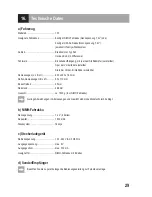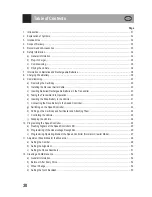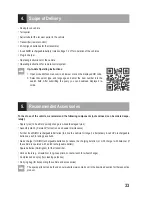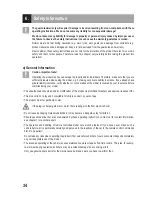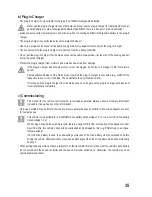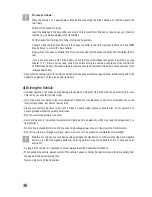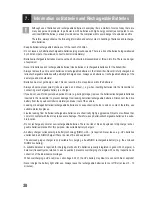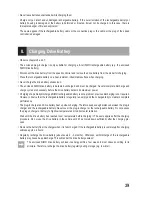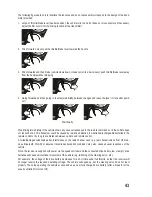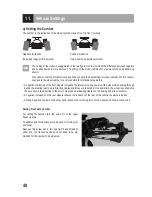
38
7. Information on Batteries and Rechargeable Batteries
Although use of batteries and rechargeable batteries in everyday life is a matter of course today, there are
many dangers and problems. In particular in LiPo batteries with high energy content (as compared to con-
ventional NiMH batteries), various provisions must be complied with to avoid danger of explosion and fire.
Therefore, always observe the following information and safety notes in handling of batteries and recharge-
able batteries.
• Keep batteries/rechargeable batteries out of the reach of children.
• Do not leave any batteries/rechargeable batteries lying around openly. There is a risk of batteries being swallowed
by children or pets. If swallowed, consult a doctor immediately!
• Batteries/rechargeable batteries must never be short-circuited, disassembled or thrown into fire. There is a danger
of explosion!
• Never mix batteries and rechargeable batteries! Use batteries or rechargeable batteries for the transmitter.
• Always replace the entire set of batteries or rechargeable batteries in the transmitter. Never mix fully charged bat
-
teries/rechargeable batteries with partially discharged ones. Always use batteries or rechargeable batteries of the
same type and manufacturer.
• Batteries must not get damp or wet. This can result in a fire or explosion with LiPo batteries!
• Always observe proper polarity (observe plus/+ and minus/-), e.g. when inserting batteries into the transmitter or
connecting a rechargeable battery to a charger.
• If you do not use it for any extended period of time (e.g. during storage), remove the batteries/rechargeable batteries
inserted in the transmitter to prevent damage from leaking batteries/rechargeable batteries. Disconnect the drive
battery from the speed controller completely and take it out of the vehicle.
• Leaking or damaged batteries/rechargeable batteries can cause chemical burns to skin on contact; therefore, use
suitable protective gloves.
• Liquids leaking from batteries/rechargeable batteries are chemically highly aggressive. Objects or surfaces that
come into contact with them may take severe damage. Therefore, keep batteries/rechargeable batteries in a suita-
ble location.
• Do not recharge any normal, non-rechargeable batteries. There is a risk of fire and explosion! Only charge rechar
-
geable batteries intended for this purpose. Use suitable battery chargers.
• A battery charger corresponding to battery technology (NiMH, LiPo....) is required. Never leave, e.g., LiPo batteries
unattended in an NiMH charger! There is a risk of fire and explosion!
The enclosed plug-in charger is only suitable for charging a 6-cell NiMH rechargeable battery (e.g. the enclosed
NiMH drive battery).
• A suitable balancer is required for charging multi-cell LiPo batteries (usually integrated in good LiPo chargers). A
balancer (frequently also referred to as an equalizer) prevents overcharging of a single LiPo cell by inspection and
correction of the individual cell voltages.
When overcharging a LiPo cell (max. cell voltage 4.24 V), the LiPo battery may bloat or even catch fire or explode!
• Never charge the battery right after use. Always leave the rechargeable batteries to cool off first (at least 5 - 10
minutes).
Summary of Contents for 1405819
Page 114: ...114 ...
Page 115: ...115 ...






